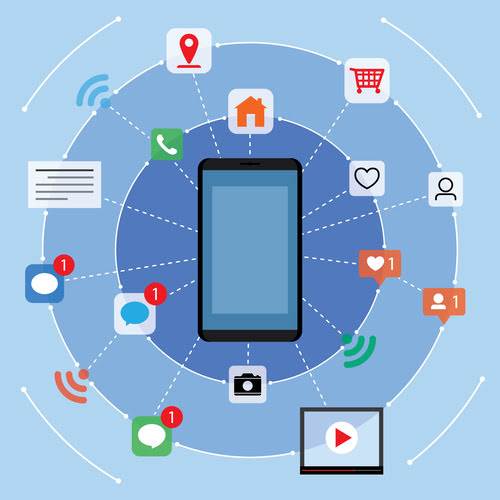These companies may dedicate teams of individuals to managing the software lifecycle in a way that supports the client company based on discovery and participation. Iterative and incremental practices led to prototyping in the 1980s, which led to various different types of innovations like spiral and V-model frameworks, and then into agile in the 1990s. Testers, like quality control inspectors, thoroughly examine every nook and corner of the software. They do unit tests, integration tests, system tests, and acceptance tests to guarantee that everything works well. Developing a new mobile app using the Agile Model, for example, would involve working in small iterations, delivering little pieces of functionality and getting feedback every few weeks from stakeholders. Developers are unable to progress to the following age unless the previous one has been completed and approved by management.
If you pay attention to the latest headlines, you’ll see how data breaches and other cyberthreats are wreaking havoc on businesses across the globe. And while software security is becoming a higher priority, for many businesses it’s still an afterthought. While SDLC and project management are two different concepts, they often work together.
Systems development life cycle
The V-shaped paradigm, also known as the Verification and Validation model, is an offshoot of Waterfall that stresses testing at each stage of development. The Spiral model is one of the most adaptable SDLC approaches since it borrows from the Iterative model and its emphasis on iteration to guide the project through its four phases repeatedly till completion. There’s a system development life cycle (sdlc) distinct plan for each phase that builds on what was learned in earlier phases. The Waterfall methodology is intuitive and straightforward to control. Through a direct cutover, the project is implemented by transferring all necessary components and data from the old system to the new one. End users can discuss and identify their application business information needs.

Other organizations may include steps for deconstructing, retiring and replacing software as well. It may also be helpful to choose your first software language to learn. Languages like C# and Java are still in demand by employers, but many new languages are emerging, too. Before choosing a language, you need to know what you want to code, but simple front-end development languages like JavaScript, HTML, and CSS are good places to start.
Planning Stage
These days, many people are successfully pivoting or switching their careers from education, the service industry, and more to coding and development. They may complete bootcamps or earn professional certificates online such as IBM’s Full Stack Cloud Developer. The final stage of the software development life cycle is maintenance and operations. https://www.globalcloudteam.com/ This is one of the most critical stages because it’s when your hard work gets put to the test. DevSecOps, an extension of DevOps, is a methodology that emphasizes the integration of security assessments throughout the entire SDLC. It ensures that the software is secure from initial design to final delivery and can withstand any potential threat.
Each stage in the SDLC has its own set of activities that need to be performed by the team members involved in the development project. While the process timeline will vary from project to project, the SDLC generally follows the seven stages outlined below. Developers are now responsible for more and more steps of the entire development process. ” This phase of the SDLC starts by turning the software specifications into a design plan called the Design Specification.
Software Deployment
Team members can depart and be replaced rather smoothly because SDLCs include well-structured papers covering project goals and processes. Checks and balances are built into SDLC models to ensure that all software is thoroughly tested before being integrated into larger source code. 7 stages of the System Development Life Cycle offer a lot of benefits to development teams who use it properly.

In this guide, we’ll break down everything you need to know about the system development life cycle, including all of its stages. We’ll also go over the roles of system analysts and the benefits your project might see by adopting SDLC. A primary problem with this approach is that it is assumed that all requirements can be established in advance. Unfortunately, requirements often change and evolve during the development process. Around seven or eight steps appear commonly; however, there can be anywhere from five upwards to 12.
Build
Many of these models are shared with the development of software, such as waterfall or agile. Numerous model frameworks can be adapted to fit into the development of software. There are seven stages in the SDLC and six common models that are used for different projects.
- This method results in several release cycles, during which each iteration is tested, bugs are resolved, and input from stakeholders is gathered.
- It explains how each and every aspect of the product, as well as each component, should function.
- As part of the development process, the Design phase lays the foundation for the remaining phases, resulting in a blueprint for further development and testing phases.
- As the SDLC is a repetitive methodology, you have to ensure code quality at every cycle.
- They may complete bootcamps or earn professional certificates online such as IBM’s Full Stack Cloud Developer.
- It’s critical to follow the seven phases of the System Development Life Cycle whenever you’re working on a new product.
They will have to evaluate the proposed layout to see if it helps the company achieve its primary objectives. Bugs, interoperability, and other issues can be tested multiple times. The goal of this stage is to define the full extent of the issue and generate potential answers. Costs, benefits, time, money, and so on are all relevant factors to think about. To ensure the overall success of the project, this is the most important stage.
Stage 4: Building or Developing the Product
The agile methodologies’ goal is to provide an iterative approach’s flexibility while ensuring a quality product. The goal of this phase is to create an application that can be tested by potential users. Central to the creation of a new information system is the analysis of the public health agency’s business processes that the information system must support.

The Agile SDLC model separates the product into cycles and delivers a working product very quickly. Testing of each release feeds back info that’s incorporated into the next version. According to Robert Half, the drawback of this model is that the heavy emphasis on customer interaction can lead the project in the wrong direction in some cases.
What is the system development life cycle?
Because this document determines all future development, the stage cannot be completed until a conceptual design review has determined that the system specification properly addresses the motivating need. Object-oriented analysis and design (OOAD) is the process of analyzing a problem domain to develop a conceptual model that can then be used to guide development. During the analysis phase, a programmer develops written requirements and a formal vision document via interviews with stakeholders. This stage is usually a subset of all the stages as in the modern SDLC models, the testing activities are mostly involved in all the stages of SDLC.

0 Comments